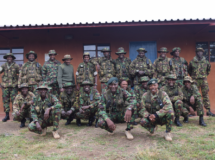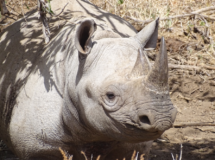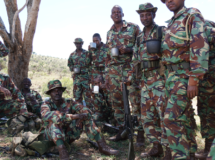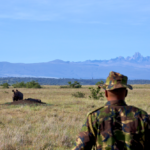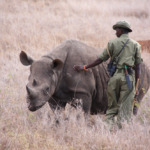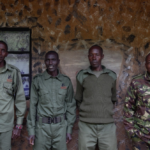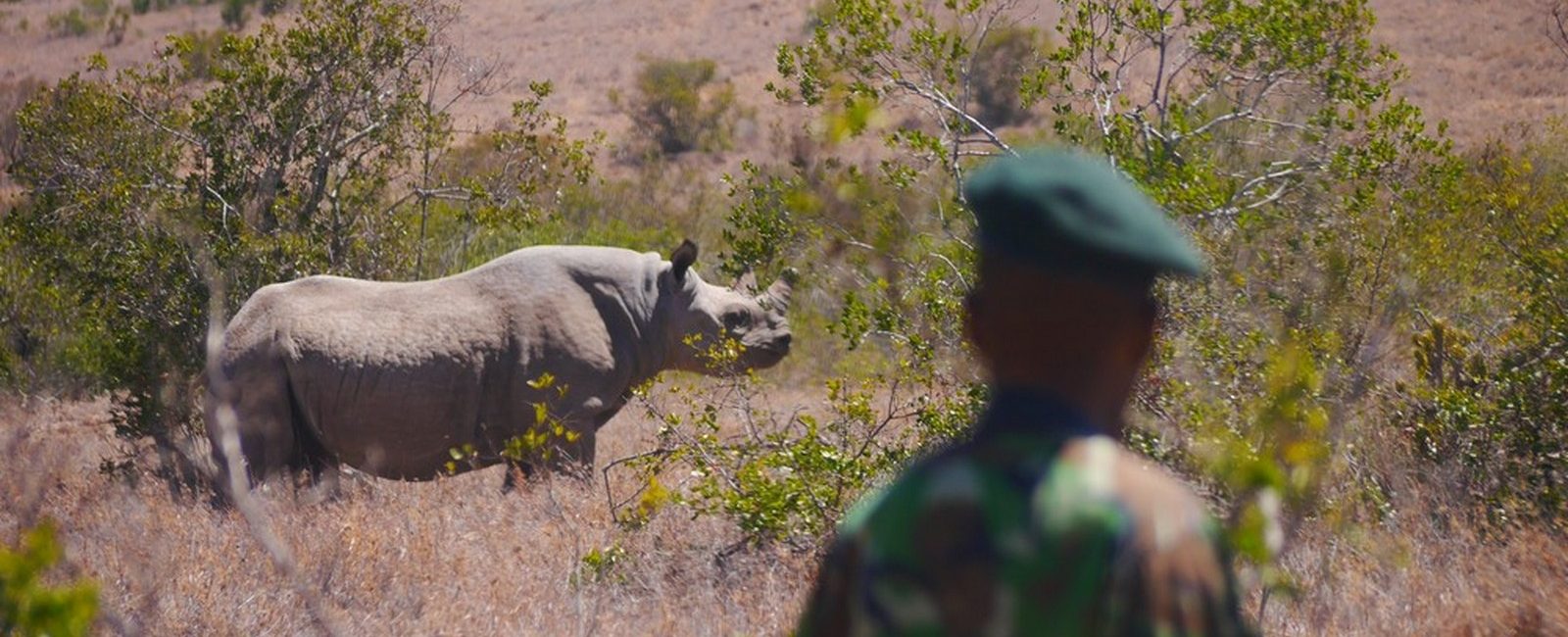
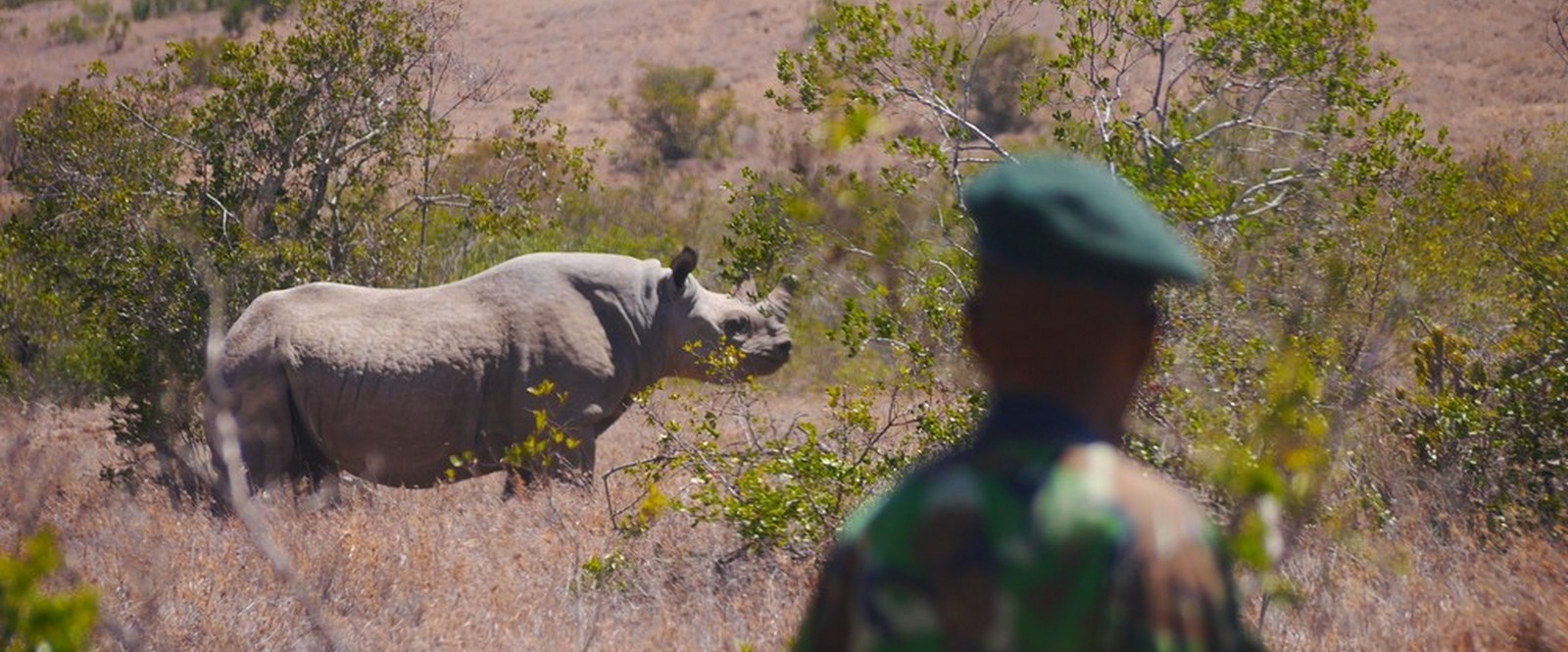
Kenya: The Association of Private and community Land Rhino Sanctuaries
With Kenya’s Eastern black rhino population plummeting during the 1980s and 90s, the Government supported the establishment of small, intensively protected rhino sanctuaries on private and, later, community-owned land. Registered in January 1990 towards the tail end of the-then poaching epidemic, the Association of Private Land Rhino Sanctuaries (APLRS), since renamed to include ‘community’, was established in collaboration with the Kenya Wildlife Service (KWS). The Association is working with its Members to create a level playing field when it comes to rhino breeding, anti-poaching, and veterinary care for rhinos across Kenya, and working at metapopulation level to expand rhino range.
This has proved successful, and the populations of both Eastern black and Southern white rhinos have been increasing on the country’s private and community rhino sanctuaries. The Kenyan Government’s long-term vision is for the country to host 2,000 Eastern black rhinos; today, more than half of the country’s >900 black rhinos are on privately-owned landscapes.
Our conservation partners, Ol Jogi Wildlife Conservancy, Lewa Wildlife Conservancy, Borana Conservancy and Ol Pejeta Conservancy are all members of the APLRS.
The problem
The number of black rhinos in Kenya plummeted from more than 20,000 in 1970 to fewer than 350 individuals by the end of the 1980s, due to relentless poaching. The remaining rhino populations were at risk of disappearing because they were too few and spread out to breed successfully.
Therefore, the Government of Kenya adopted a principle of strict protection to safeguard the few survivors. Several approaches were employed, including collaboration with the KWS and the private sector to establish intensively protected and heavily guarded rhino sanctuaries on privately owned land. As a result, the APLRS was formed in 1988, mandated by the KWS to represent the interest of the private, and now community, sector involved in the conservation of rhinos on non-state land.
The populations in these areas have steadily recovered but, being restricted to the confines of designated rhino sanctuaries, density-dependent factors have become apparent in recent years. The paradox now is that too many rhinos confined to a limited area of habitat can affect breeding performance, whilst intraspecies disputes over territory can lead to injuries and death.
How is the Association of Private Land Rhino Sanctuaries tackling this problem?
The APLRS’s main roles are to coordinate security (anti-poaching) efforts between the Members, and to provide biological management of Laikipia County’s rhino population to achieve maximum growth and genetic diversity, thus contributing to the Recovery & Action Plan for the Black Rhino in Kenya 2022-26.
The APLRS has the following objectives:
- Conserve and manage all rhino on private and community lands in consultation and collaboration with the KWS
- Represent the private sector involved in the conservation and management of all rhinos on private and community land
- Provide secure land and offer security to all rhinos held on private and community land
- Fundraise, in consultation with KWS, for rhino management on private and community land
- Build capacity for rhino monitoring and security teams
- Offer advice on issues relating to rhino conservation and management to members of the Association
- Share logistical support among members
- Coordinate channelling of specific issues relating to rhino on private and community land to the Rhino Steering Committee
All APLRS areas are in insecure and banditry-prone areas where rhino poaching attempts had skyrocketed since 2009. This indiscriminate poaching was facilitated by excessive infiltration of ammunition from the neighbouring Somalia and intensified due to the increase in global demand for rhino horn to supply the demands in China and Viet Nam. This led to significant prices being paid to poachers to obtain the horn illegally. To curb poaching, each rhino sanctuary (and Kenyan national parks in general) has deployed additional resources, most notable being the employment of more rhino security and monitoring personnel, supply of vital equipment, machinery including vehicles and aircraft. They have also acquired tracker dogs to assist in the follow up of poachers.
More recently, the national rhino database, known as Kifaru (Swahili for ‘rhino’), has been overhauled to create useful reports at population and metapopulation level. Kifaru can generate monthly and annual status reports automatically, summarising the rhino populations’ growth rates, population structures, inter-calving intervals, male-female ratios, and animal body conditions. To maintain the data in Kifaru successfully and efficiently so that it can generate the correct data for managerial decisions, as well as to coordinate efforts across APLRS Members to implement the Recovery & Action Plan for the Black Rhino, an Administrator was hired. John Gitonga has undergone a series of on-the-job training courses and is now embarking on a Masters in data science at Strathmore University.
For the Recovery & Action Plan for the Black Rhino to be implemented successfully, effective partnerships between state, private and community sectors are essential. The Association itself is a mechanism that enables discussion and cooperation between various Kenyan rhino stakeholders, including sites, such as Loisaba and Segera Conservancies, that are in the process of applying to host rhinos on their land. Under the guidance of existing APLRS Members, these new guardians are required to improve their infrastructure and documentation to ensure that stringent site-selection criteria are met before any rhinos are translocated.
Thanks to funding from Save the Rhino’s donors, the APLRS also oversees a Black Rhino Emergency Fund, which reimburses APLRS Members with 50% of the costs incurred by a black rhino requiring emergency veterinary interventions. Such scenarios include treatment of individuals injured by poaching attempts or those inflicted during fights with dominant bulls; translocations of aggressive bulls to new areas; and recapturing individuals that have damaged a fence and escaped. At the end of December 2021, for example, a male black rhino needed to be sedated to treat an injured front limb suspected to have been inflicted in a fight with another rhino. Following treatment, the rhino made a full recovery.
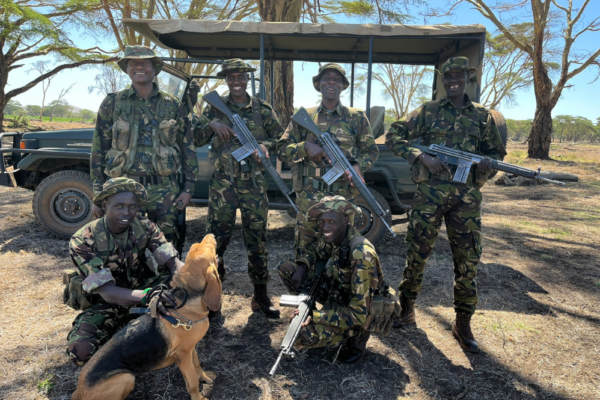
The APLRS works together to support rangers, including the anti-poaching canine units.
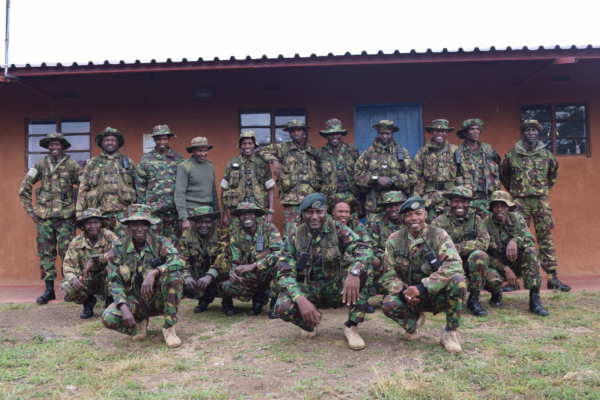
Working together, APLRS members can collaborate on ranger training and support.

Collaborating gives APLRS members more support and resources for vital rhino conservation.
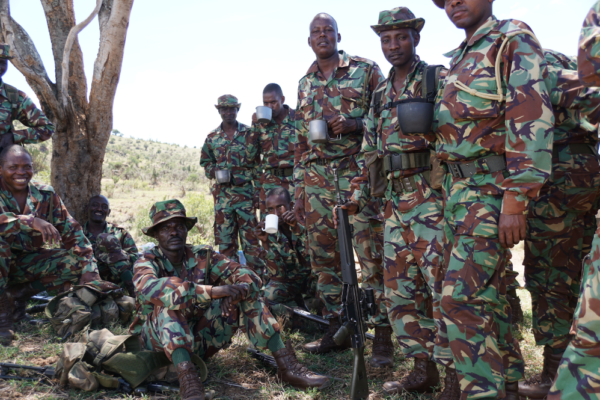
One element of APLRS work is ForRangers, a campaign set up to improve rangers lives by providing better accommodation conditions and family support.
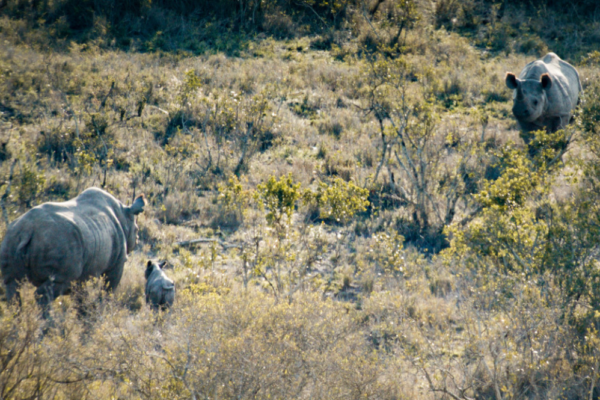
Together, APLRS members are working to support the next generation of rhinos.
Our work
Since 2010, we have supported the APLRS’s Emergency Fund for Black Rhino, providing funds to purchase drugs, from sedatives to eye ointments, veterinarian fees and vehicle use.
With funds from the Bently Foundation, the Anna Merz Rhino Trust, the Rhino Recovery Fund, WildAid and ForRangers, we supported all seven APLRS Members during the Covid-19 crisis. The pandemic forced all tourism to shut down, severly impacting the conservancies’ budgets. Thanks to the donors above, we were able to support all APLRS Members with their Core Critical Operations Costs, sharing c. $885,012 between them.
Our funds have also been directed towards the Intelligence and Informer Network, through which payments are made to informers providing information that leads to arrests and prosecutions. Furthermore, funds have been raised that will cover the APLRS Administrator’s 2-year-long Masters in Data Science and Analytics (MSc DSA) at Strathmore University. This course will improve John’s knowledge and skillset when analysing rhino data, aiding the effective population management and decision-making process for Kenya’s black rhino population.
In 2019, Save the Rhino, with the support of the Bently Foundation, organised a Laikipia Rhino Range Expansion Workshop. Contributors were invited to share their previous experiences of rhino-range expansion and strategize the next steps to develop this further. The Workshop turned out to be highly beneficial, with a new set of selection criteria for suitable custodians developed, guidelines for new rhino conservancies and an endorsement matrix for potential new sites.
Protecting Kenya's rhinos through the APLRS
 Protecting Rhinos
Protecting Rhinos
 Reducing Illegal Horn Trade
Reducing Illegal Horn Trade
 Involving Communities
Involving Communities
 Bringing Experts Together
Bringing Experts Together




